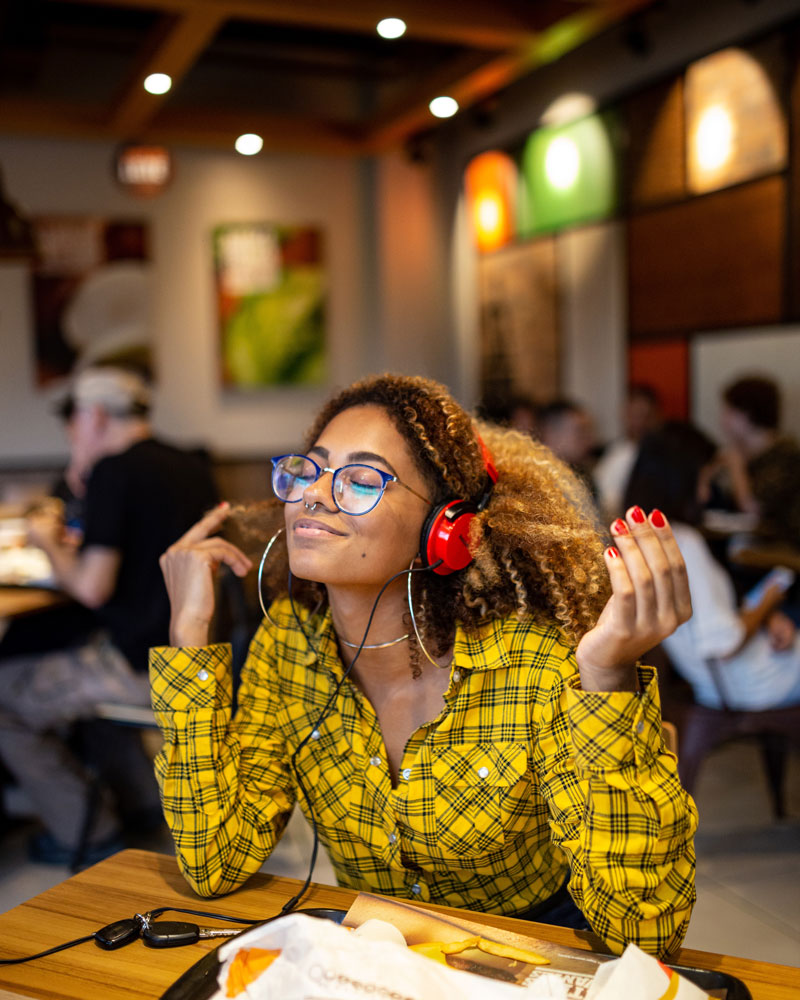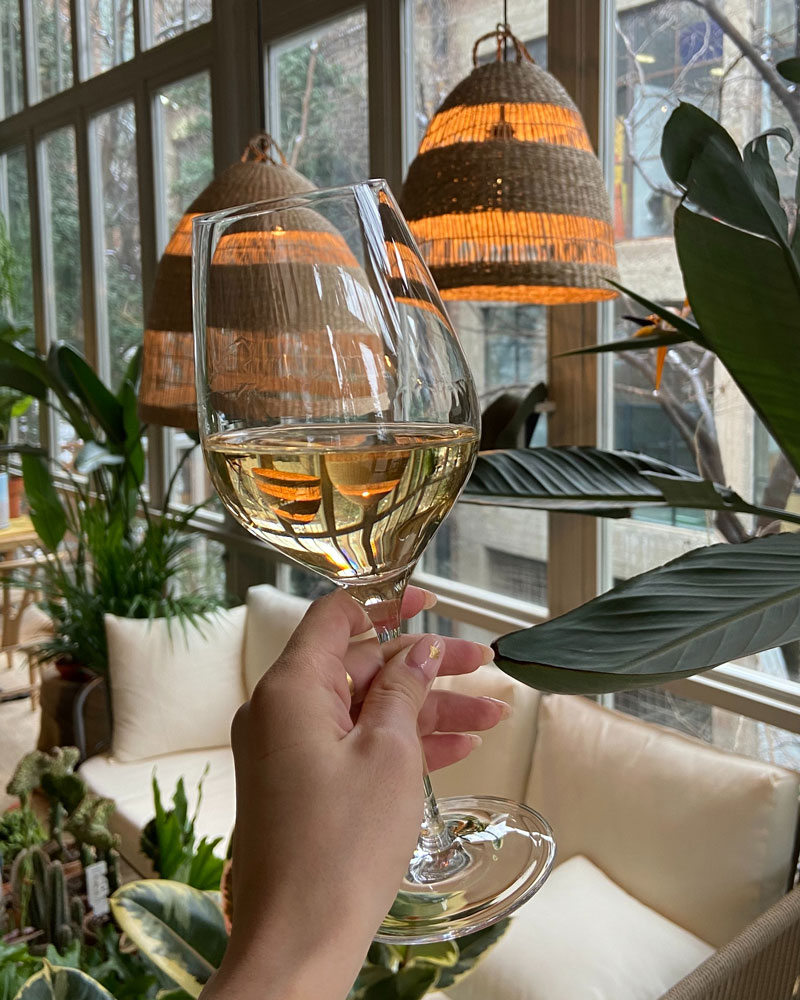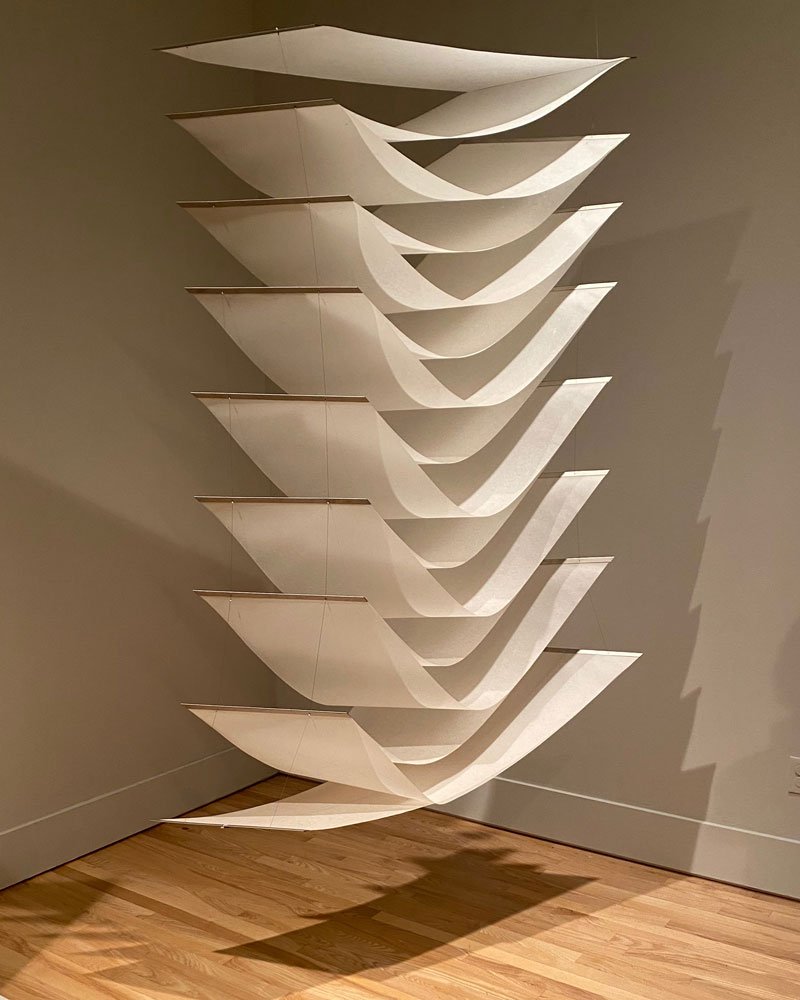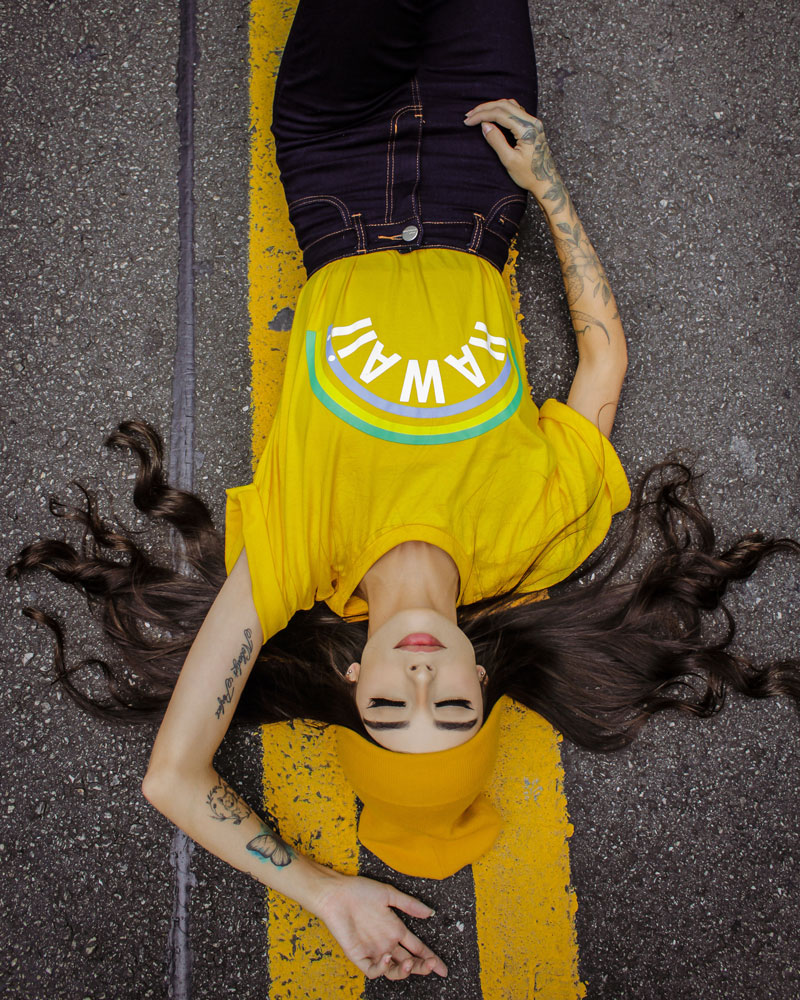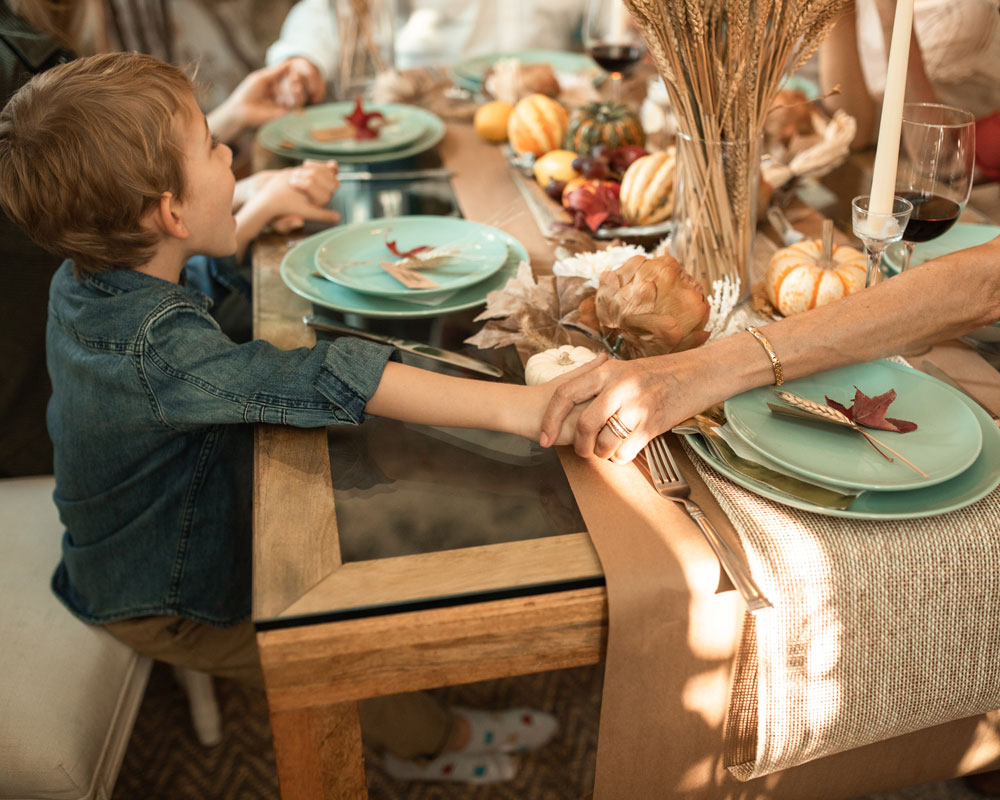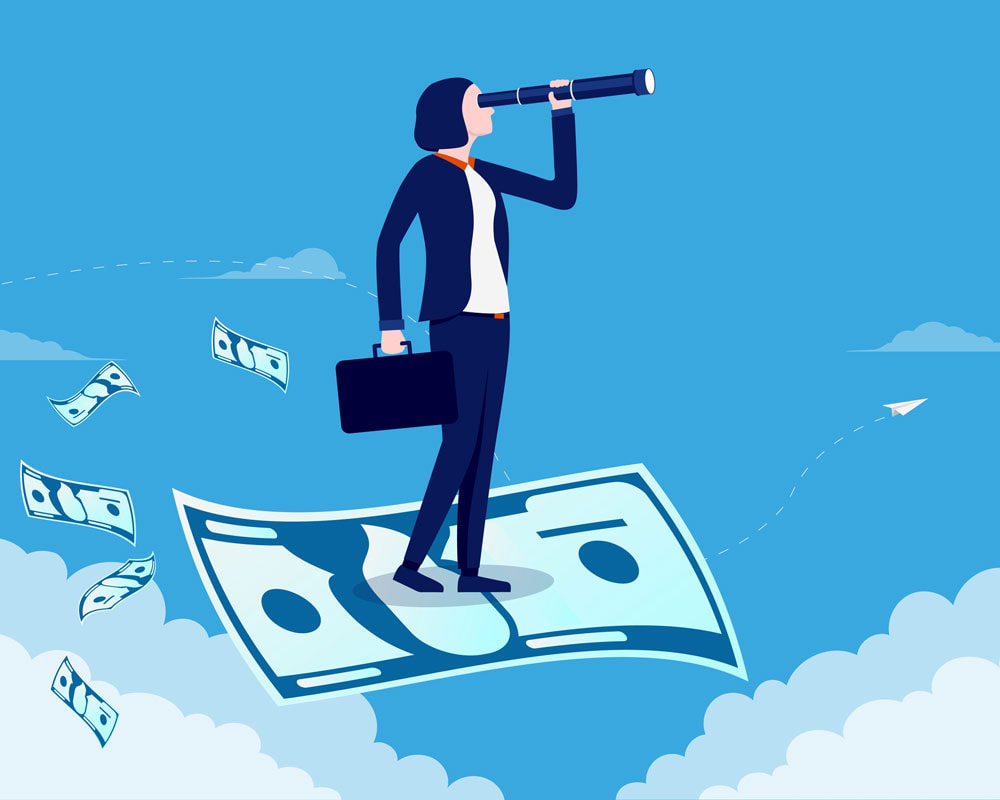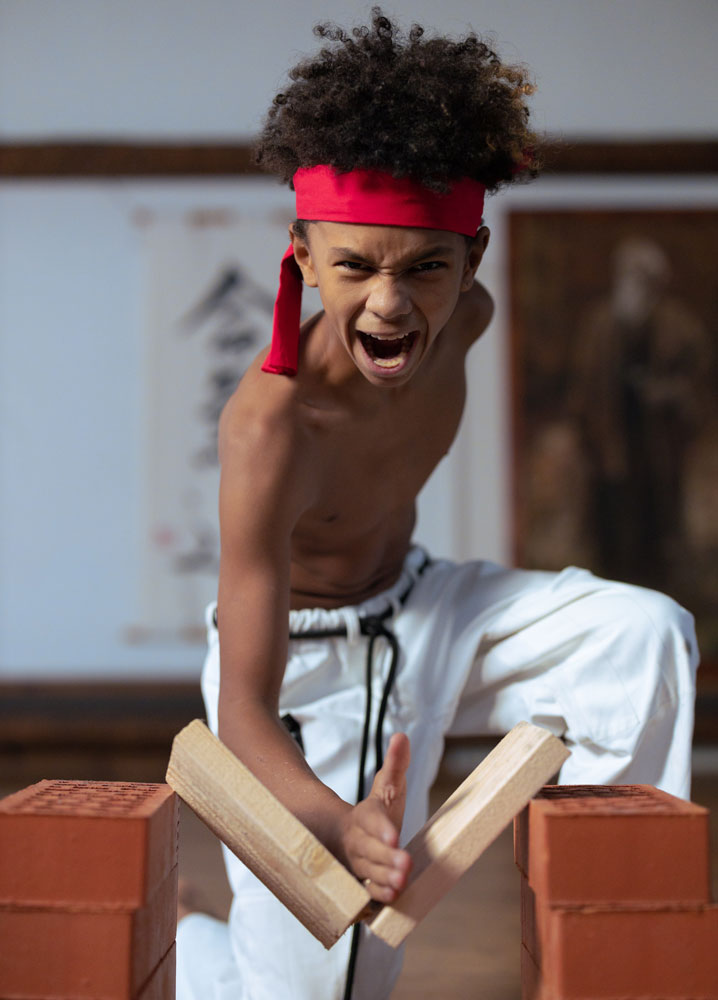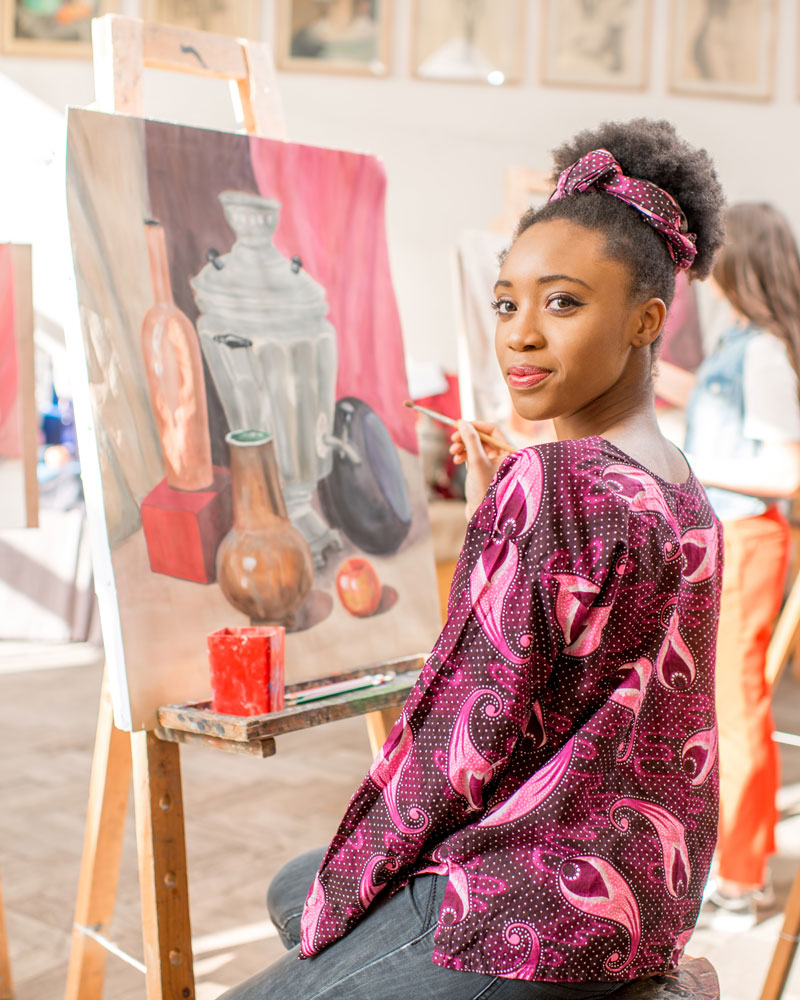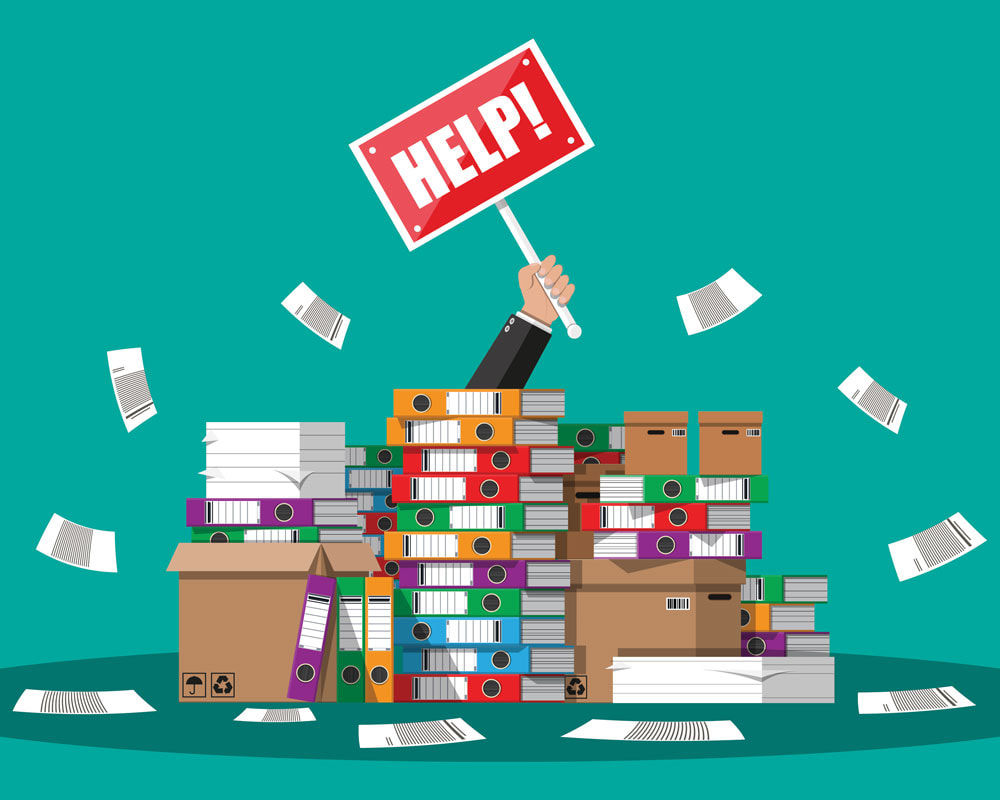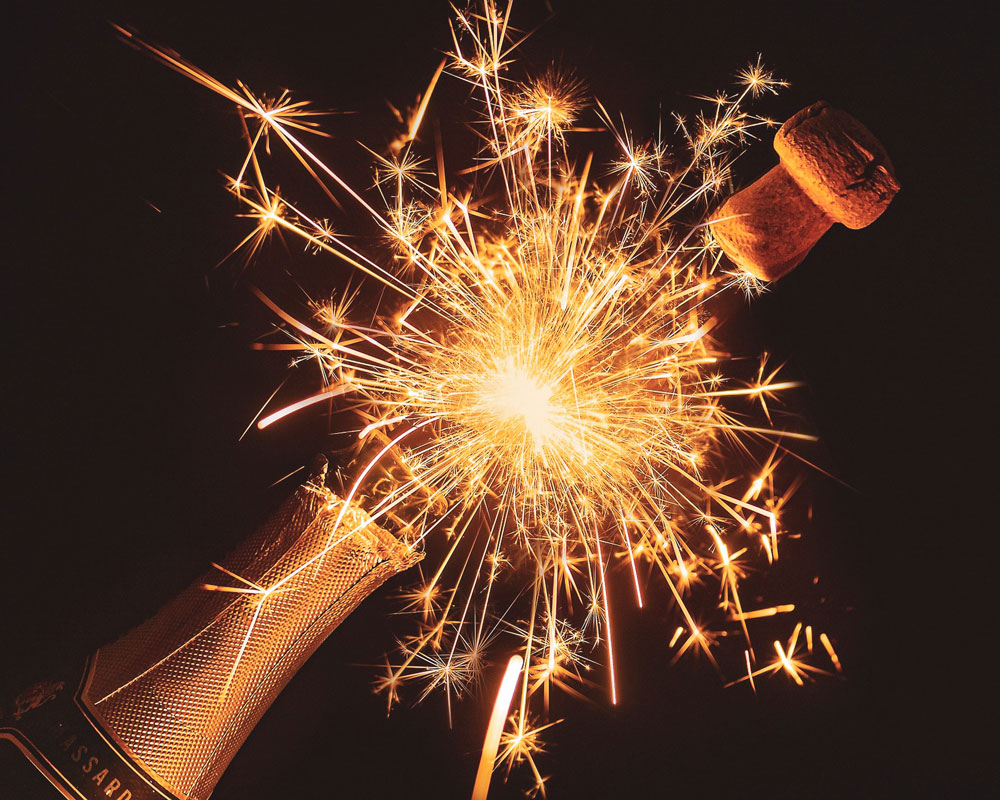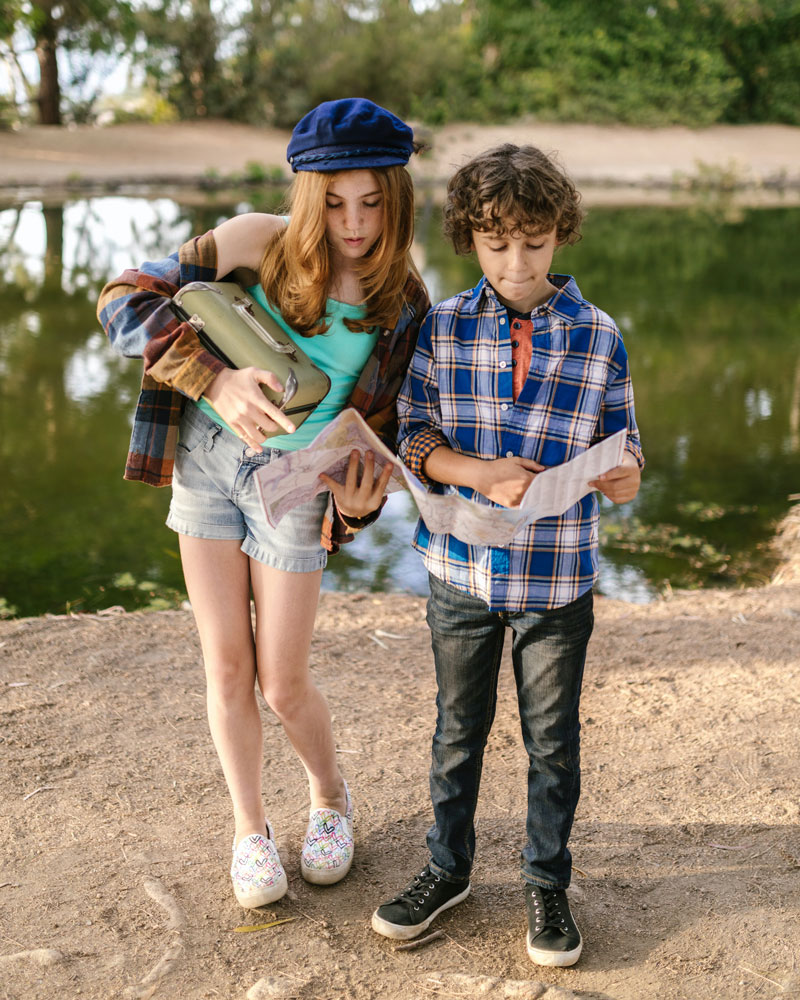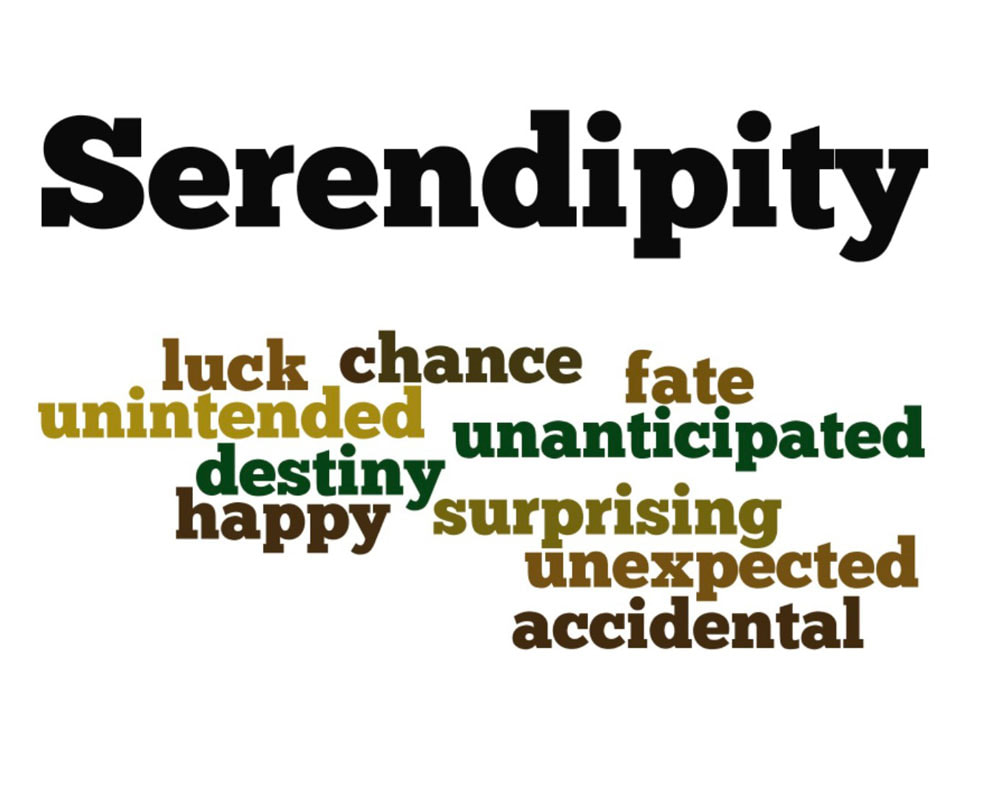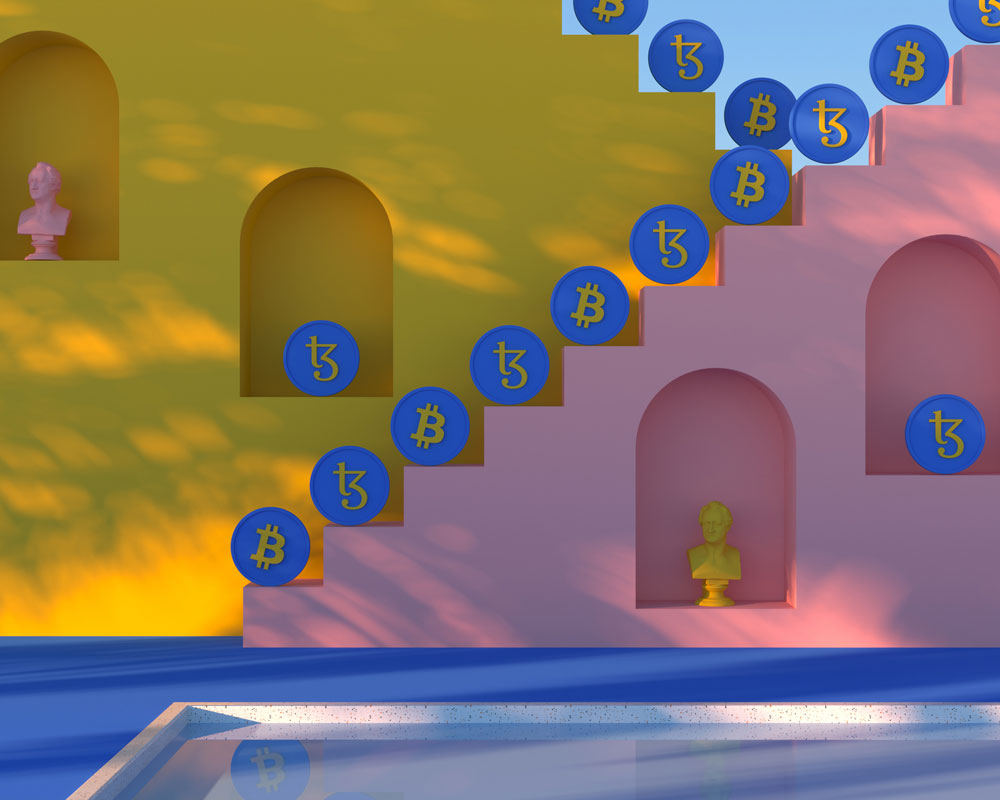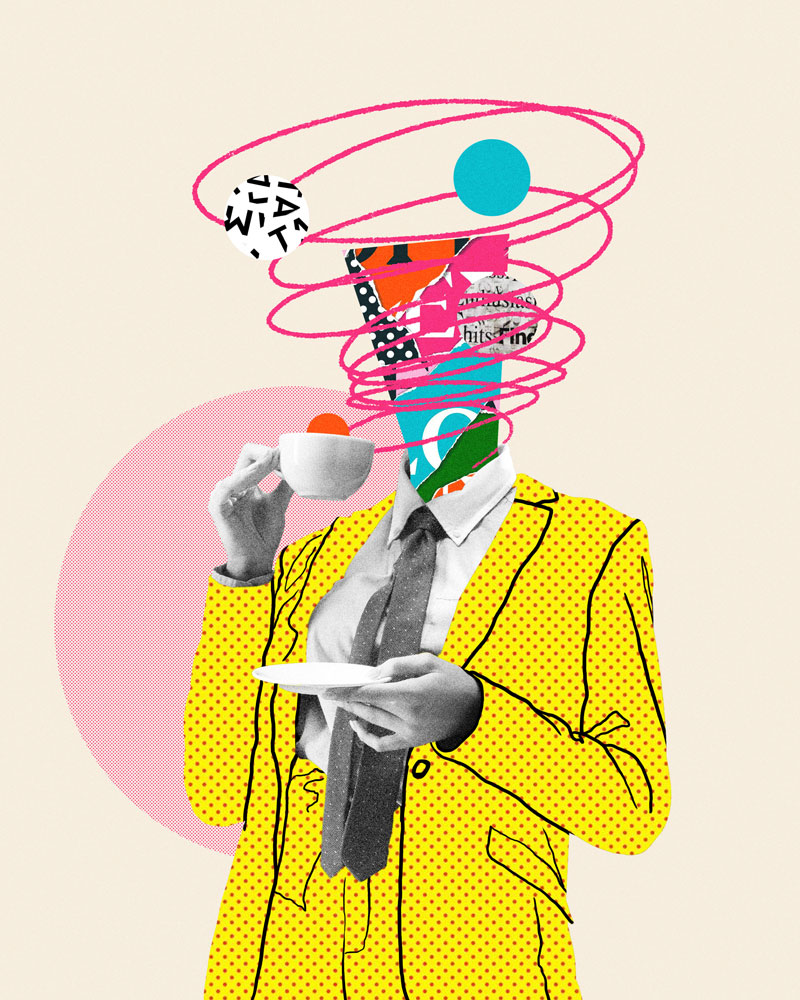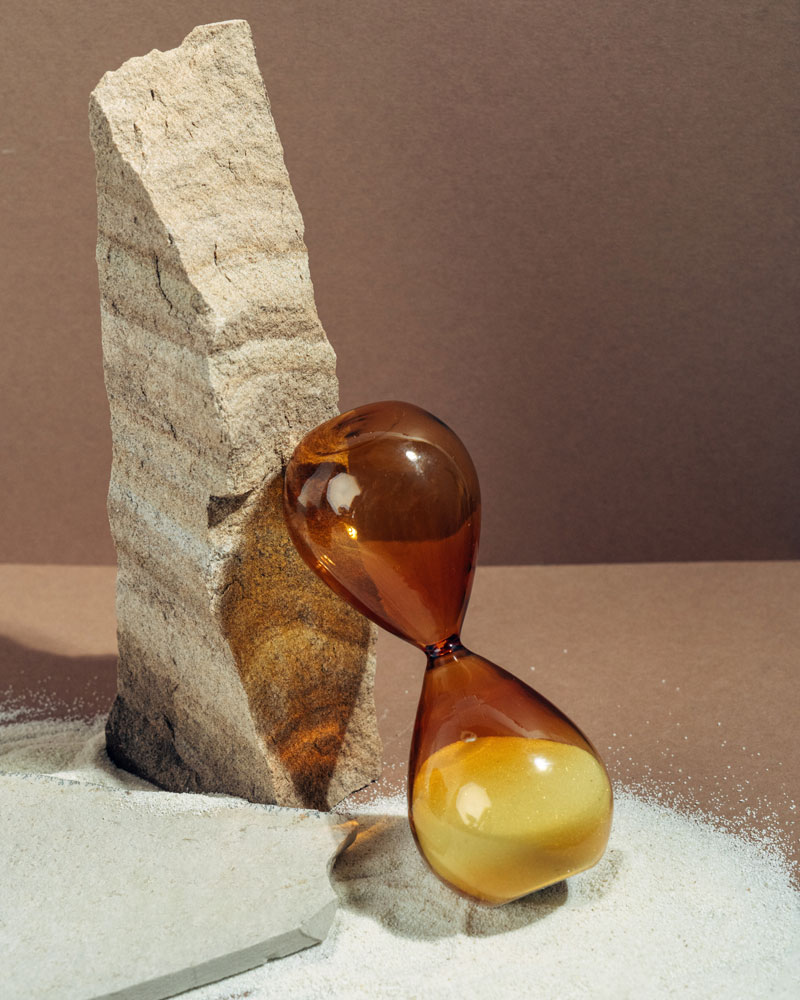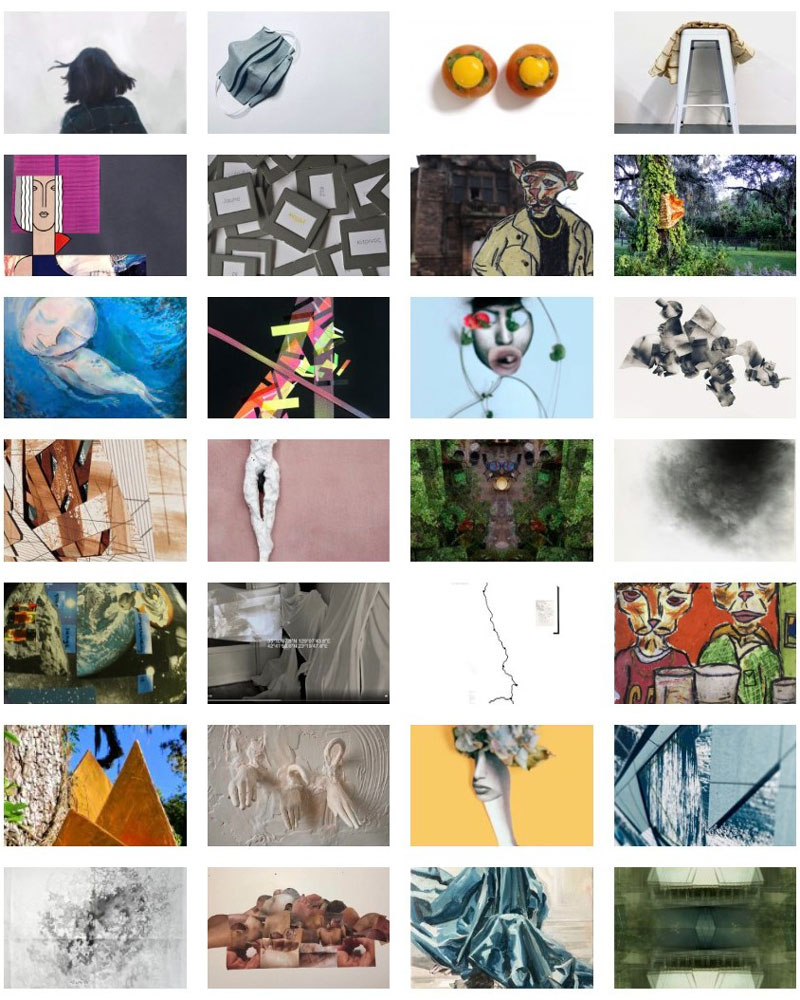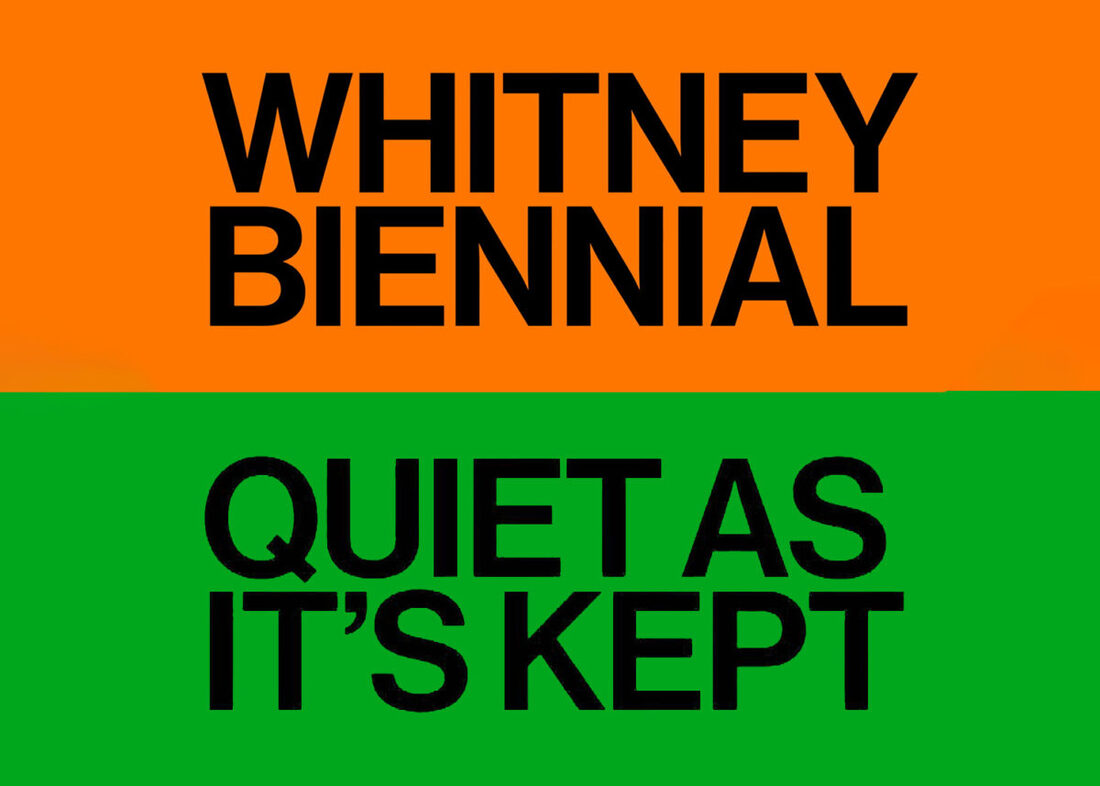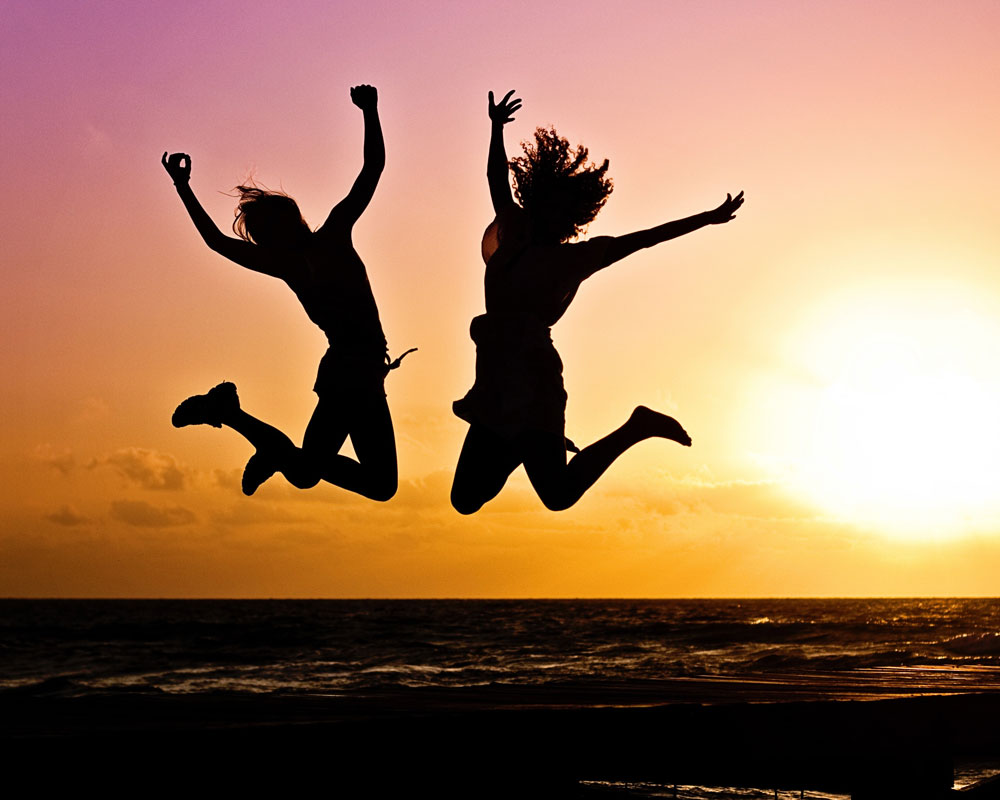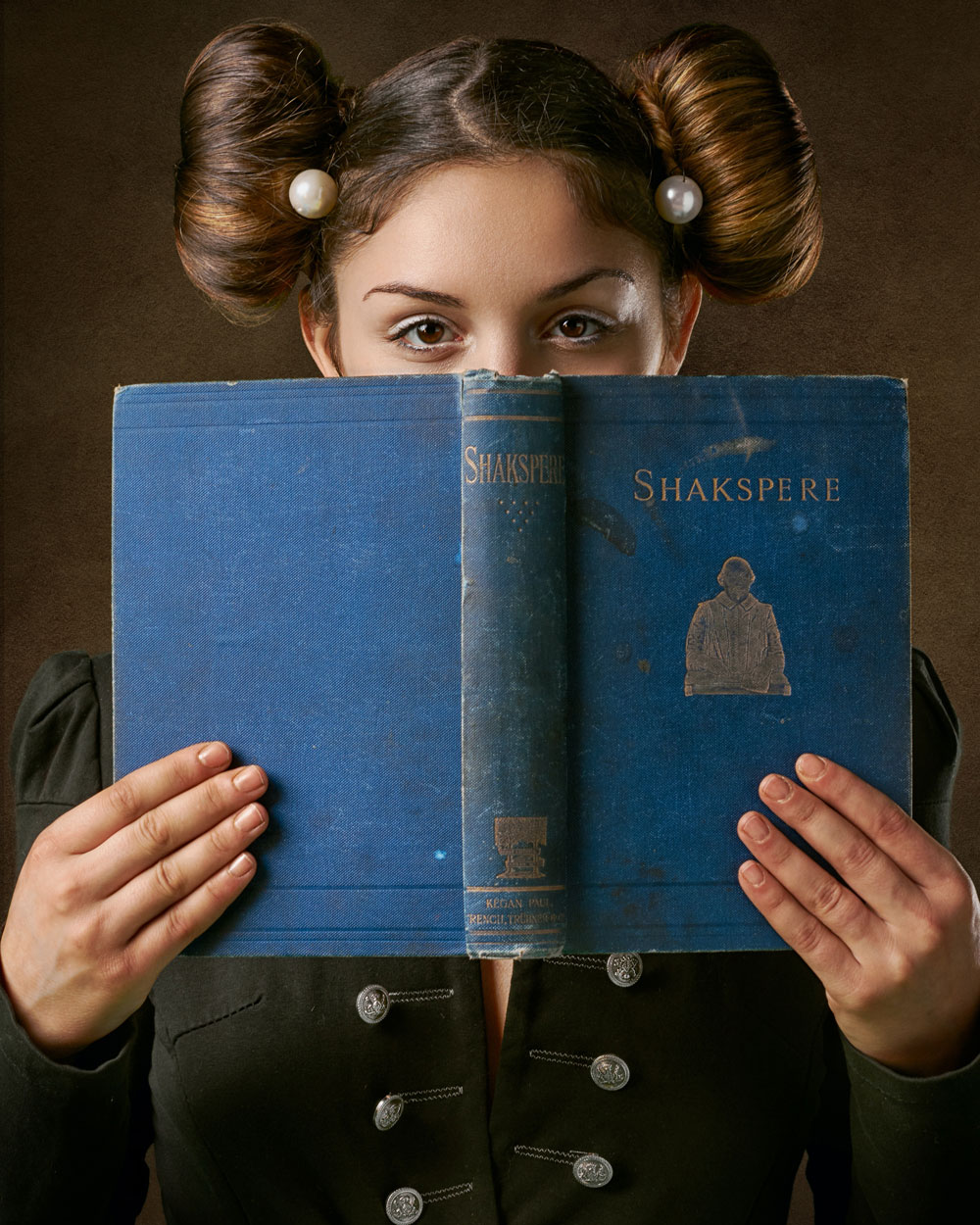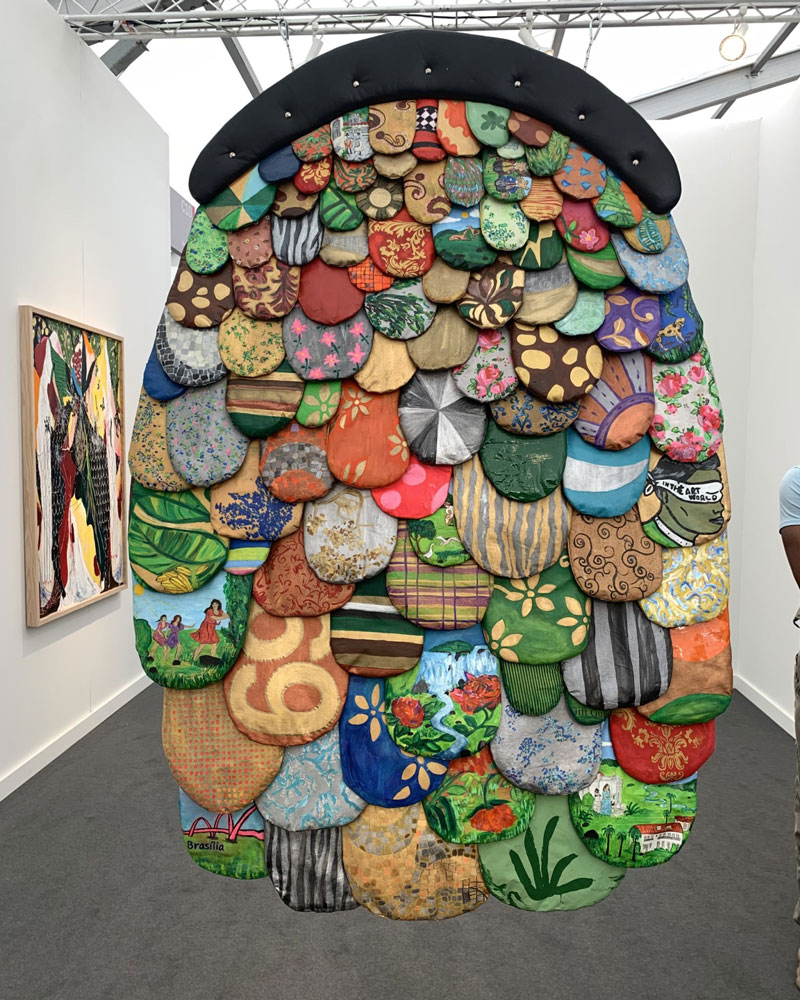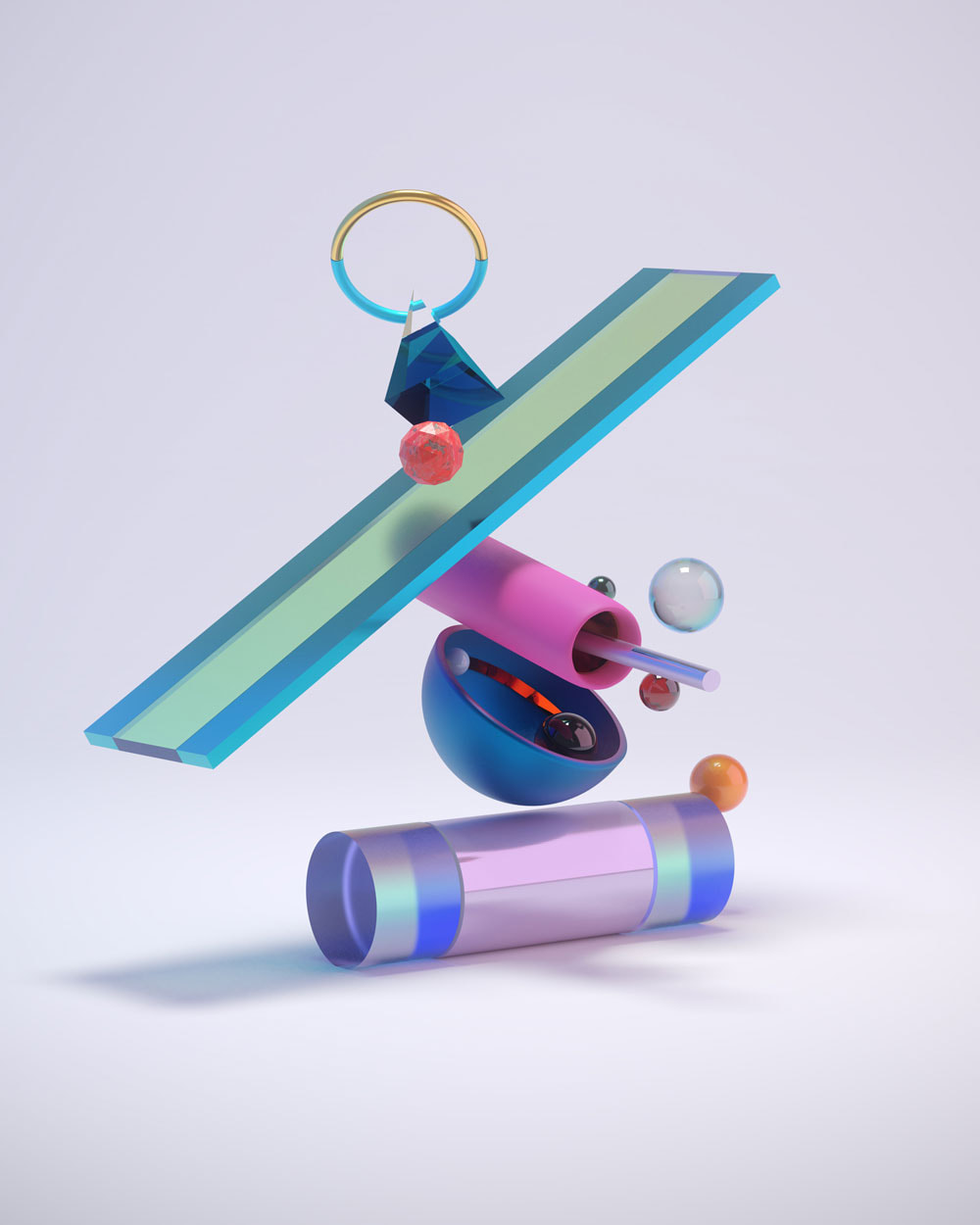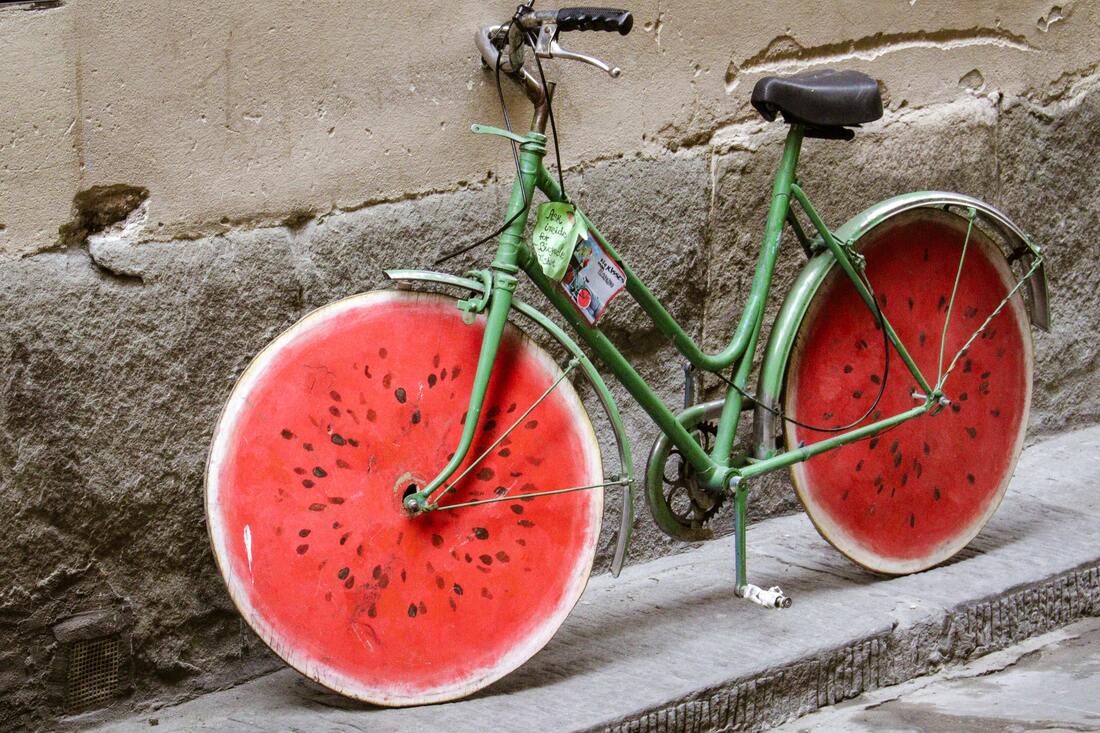|
The noise out there in the art world can be deafening. You struggle to find the space and time and silence to be a maker, yet you are bombarded by suggestions about what else you should be doing. Listen to this podcast, sign up for this newsletter, join this group, sell your work HERE! How do you respond? First, don’t try to do everything, everywhere, all at once. We know that making art is a right brain process, while marketing requires many left brain tasks. When you try to do both at once, it can create a whiplash effect. Instead of multi-tasking, it’s better to schedule days for art, and other days for marketing and administration. If you can’t do that, at least give yourself big breaks between the two. It is also helpful to think of your career as happening in stages, or seasons, each with its priorities. When you’re developing a new body of work, let yourself go deep into the creative process, and stay there for as long as it takes. Press the mute button on everything else. When you are ready, consider how you want your work to be visible. If you’re just starting out, consider opportunities close to home. You’ll learn more when you’re able to show up in person for events, and you’ll connect with your community. If you want to be visible online, focus your energy on one platform or online gallery at a time. Keep your profile and work samples current. Post regularly, follow other artists, galleries and museums, liking and commenting on what you see. Finally, try to eliminate the noise in your daily life. Let go of activities that fragment your time, so that you can focus on what matters most to you now. Mary Edwards, Ph.D
Career & Life Coach for Artists “Left Brain Skills for Right Brained People” Instagram: coachingforartists.maryedwards I used to own a set of eight crystal wine glasses. They were simple and lightweight, nicely proportioned and even fit in the dishwasher. Everybody said they were perfect. Over the years one broke, and then another, and now I have one left. While I don’t object to solitary wine drinking, I had to find more. Sadly I discovered that they are no longer made. When you have an image in your mind of how it should be, it’s hard to accept another version. Artists are constantly asked to embrace new models of making, showing, buying and selling art. If you’re having trouble adjusting to this, you are not alone. The art market has become so diverse and dynamic that it is hard to know where you fit. I work with artists who are marketing (and selling) their work through traditional and online galleries, through social media, in art fairs and festivals, on home décor sites, on their websites and in their studios. Since there is no single solution, find what works for you. If you’re an introvert, and computer savvy, consider the online art market. Last year online art sales totaled 13.3 billion. Look for online galleries in your medium (search “best platforms to showcase and sell” painting, drawing, photography, etc.). Find one that appeals to you, and dig into the details. If you hate being online and consider social media a scary time suck, you’ll have to pound the pavement. Visit every possible art venue in your town or region. Show up at local shows, visit local museums. If you live in a remote area, get in your car and drive to a bigger city. Talk to everyone you know to get their recommendations. Me? I searched online and on foot, and found excellent wine glasses, perfect 2.0. Mary Edwards, Ph.D Career & Life Coach for Artists “Left Brain Skills for Right Brained People” Instagram: coachingforartists.maryedwards I’ve gotten a lot of positive feedback on my recent post, “Go Slow,” from artists who are letting themselves relax, rejuvenate, and create at their own pace. But sometimes you need to find the energy to push. That final effort is especially important when you are creating a business. Creative entrepreneurs with a vision and a strategy, a solid business plan, a good website, still must find ways to bring their idea to life. What I’ve found to be most important is that final stretch, when you’re almost there. An artist I know likens this to the last stages of childbirth, when everyone is yelling PUSH. You want to give up because it’s so hard, but still you have to PUSH, and then you hold a tiny miracle in your hands. It may be time in your art practice or career to find the energy to push—to push again, to push harder, to push through your own hesitations. You make a sustained effort even though you’re exhausted and discouraged. Find ways to connect in person with your audience. Go to events where they gather. Introduce yourself, listen to what’s on their minds, and then talk about what you offer. Your idea comes alive when you engage with others. When I first started my own business there were no career coaches for artists. Yet I could hear the voices of creative people all over the world reaching out, asking for help. Through talks and workshops I found ways to engage with my audience, to meet artists in person. These connections gave me the energy and confidence for the last PUSH, and here we are, together now. Mary Edwards, Ph.D Career & Life Coach for Artists “Left Brain Skills for Right Brained People” Instagram: coachingforartists.maryedwards I recently had the pleasure of seeing two remarkable art exhibitions at small museums in South Florida. These very different exhibitions show what’s possible when innovative curators decide to avoid blockbuster exhibitions and focus on revealing unknown or little-known artists and art forms. Washi Transformed, New Expressions in Japanese Paper, is now at the Morikami Museum and Gardens. The exhibition showcases nine contemporary Japanese artists transforming traditional Japanese handmade paper (washi) into abstract sculptures and installations. The image above is by Kyoko Ibo, who was one of the first artists to use traditional washi as a medium for contemporary art. By introducing unusual textures, scale, and dimensions, she transforms an ancient medium into modern art. All of the artists marry the old and the new in a way that honors and preserves the past. The second exhibition, Art of the Hollywood Backdrop, at the Boca Raton Museum of Art, features scenic backdrops painted for the movies by real artists working between 1938 and 1968. The exhibition celebrates “Hollywood’s masters of illusion and perspective” who have received little recognition for creating backdrops for well-known movies such as North by Northwest and The Sound of Music. These painted backdrops had been rolled up and stored in the basement of MGM studios and then preserved as the Hollywood Backdrop Collection at the University of Texas. The exhibit pairs the actual backdrops, some 90 feet wide, with videos from the movies they animate. The real art and the illusion, side by side, make us fully appreciate the talented artists of this long forgotten art form. Such exhibitions open a window into worlds of artistic innovation we would not have discovered on our own. The real unsung heroes are the museum curators who made these exhibitions possible. Mary Edwards, Ph.D Career & Life Coach for Artists “Left Brain Skills for Right Brained People” Instagram: coachingforartists.maryedwards It’s that time of year when everything speeds up. Can it really be the middle of December? Somehow the holidays have already started, and your to-do list keeps growing. The best advice I have for artists is to resist this pressure, and slow down. Creating art is a slow process at best, and sharing your art with the world doesn’t happen quickly. Give yourself permission to take the time you need. What happens when you slow down? It’s the difference between driving on the highway vs. walking through the woods. Instead of the world rushing by your window, all of your senses are engaged. You see more, smell more, touch more, and feel more. Even time itself starts to take on a different shape. When you slow down, time expands and contracts in interesting ways. What was urgent becomes important but not for right now. Sometimes you find new rhythms and patterns that open up time you didn’t think you had. There’s even a Slow Art movement in the museum world. It started when Phyl Terry visited the Jewish Museum in New York and decided that he could have a deeper experience of art by spending the day looking at just two paintings. It’s now an annual event, on April 15, with over 1500 galleries and museums participating. Your art practice might benefit from the same steady focus. When your mind is distracted you don’t go deep enough to create satisfying work. Even the process of marketing your art can benefit from a slowdown. Create meaningful relationships with fewer people in your audience. Have better conversations about your work with colleagues, collectors, curators, and gallerists. Give yourself permission to go slow, and see what happens. Happy Holidays! (I’m going to take a nap.) ~ Mary Mary Edwards, Ph.D Career & Life Coach for Artists “Left Brain Skills for Right Brained People” Instagram: coachingforartists.maryedwards As the Thanksgiving holiday approaches, it is time to consider our lives and ask, “what am I grateful for?” This is especially important for artists, sensitive people who absorb all the complexities of the world. If you tend to be self-critical, take a moment to acknowledge what you have managed to do this year, and remember how others have helped you. Researchers tell us that expressing gratitude can make you happier. When you pass on positive thoughts and feelings to others, you inspire them to do the same. They call it the circle of gratitude. In my own coaching practice, I see so many remarkable achievements from artists all over the world. They have gone on artist residencies to the Arctic Circle, brought hundreds of women artists to an exhibition in Dubai, found good jobs, created large-scale tapestries for a new restaurant, gotten their work into prestigious shows, launched an art business, and found new opportunities to sell their work. But listing achievements doesn’t capture the sheer grit and determination it takes to make an art career happen. Be especially grateful for finding the courage to keep going, to start again after a long hiatus, to believe in yourself despite the doubts of others, especially those close to home. So think about what you are grateful for as an artist. You might be grateful for an opportunity that came out of the blue. You might be grateful for a conversation with another artist that made you feel less alone. You might be grateful for an organization that supported your work. Find a way to express your gratitude. My own gratitude goes to all of you. You inspire me to keep going, to push forward with my own work. Thank you for setting such a great example. ~ Mary Mary Edwards, Ph.D Career & Life Coach for Artists “Left Brain Skills for Right Brained People” Instagram: coachingforartists.maryedwards Supporting yourself as an artist has never been easy. Faced with this challenge, artists often take a job that pays the rent yet kills their creative potential. You can spend months, even years, in a “day job” that gradually becomes your life. So what can you do instead? Take time to discover what’s available now in the world of jobs for creative people. Many jobs are remote, and there are also opportunities for freelance work. Start with the major search engines (indeed, linkedin, idealist, etc.) and review the arts-related jobs. For freelance work, take a look at upwork.com. See what appeals to you, but don’t apply for anything yet. Use these job postings to learn about the experience and skills required for creative jobs. Then create a “skills-based” resume. You take your own work experience and break it down into the skills you have developed. Use broad categories, such as “communication skills,” “administrative skills” or “technical skills. Use that resume to activate your network. Have conversations with your friends, neighbors, teachers, and relatives, to get their advice about job opportunities for you. You do this because there are two systems operating at the same time: a formal online job posting process, plus an informal network. You still need to be qualified for the job, but you can get recommended by people who know you. Research shows that 80% of people who get new jobs do so through people they know. The large job sites can be a black hole, especially If you don’t have all the requirements for a job. But you might get an interview through the informal process, when someone says: “hey, I know a person who would be perfect for that job. Can I pass on their resume?” That resume could be yours. ~ Mary Mary Edwards, Ph.D Career & Life Coach for Artists “Left Brain Skills for Right Brained People” Instagram: coachingforartists.maryedwards Sometimes you find opportunities in unusual places. The art world is notoriously unpredictable, full of people who act in irrational ways. The positive side of this can produce creativity and innovation, but the negative looks like chaos. Gallerists ask for submissions but never respond. Prestigious art prizes for “emerging artists” go to well-established people. Robots create prize-winning art. How does an artist stay sane in the face of all this? It might be easier, and feel safer, for you to keep your distance, especially if you have a low tolerance for risk. But when you let down your barriers and learn to navigate the chaos, you sometimes discover unexpected opportunities. Recently a photographer found (on Facebook) a call for artists to show their work at an exhibition in France. The actual process of getting connected to the show’s organizers was full of confusion, missed signals, long silences, and logistical challenges. At the last minute she had to get her photographs printed in Germany so they could be shipped to France in time. She was tempted to give up, but she kept pushing through. Finally it all turned into a successful solo exhibition, a triumph in both sales and visibility. If you’re at a point in your career where traditional methods are not producing results, you may need to start breaking your own rules. Consider opportunities outside your comfort zone. Reach out as broadly as possible, exploring new avenues of connection, both online and off. Use your personal and professional networks in creative ways. Tell everyone what you want and need. By embracing the chaos of the art world, instead of resisting it, you may identify a hidden path that is right for you. Don’t be afraid to see what’s out there! ~ Mary
Mary Edwards, Ph.D Career & Life Coach for Artists “Left Brain Skills for Right Brained People” Instagram: coachingforartists.maryedwards In order to grow we have to let go of old ways of being, of thinking, of doing things, and find new ones. This all sounds simple, but isn’t, partly because of the messy scary part in the middle: what Bill Bridges calls “the neutral zone.” The neutral zone is that in-between time, when you’re giving up old ways but haven’t yet found new ones. It can be uncomfortable because you’re not sure what comes next, but for artists it can also be a creative space. You remain in the moment, paying attention to what you’re thinking and feeling, and let yourself explore new possibilities. You learn how to live with confusion and uncertainty as you move forward. When creating a new body of work you may let go of old boundaries and assumptions. Perhaps your realistic paintings are becoming more abstract, or your sculptural works are turning into an installation with sound or video or a larger conceptual framework. Remember that this may be a slow, messy, and uncertain process. Trust yourself, and be patient, as you welcome the new in all its wobbly beginnings. If you’ve been away from your art practice for a few months or even a few years, it is even more important to pay attention to the transition process. The difference between not making art and starting to make it again is profound. Don’t be surprised if your doubts and fears resurface, but let yourself begin. Build space in your life for art, gradually and consistently, a little bit at a time. Creating real change takes both concentration and a willingness to be at sea for awhile. You may have to say no to other people’s needs, or even give up old habits. Allow yourself the time and space to grow. ~ Mary
Mary Edwards, Ph.D Career & Life Coach for Artists “Left Brain Skills for Right Brained People” Instagram: coachingforartists.maryedwards Artists often want to become more business-like. For example, you know you need to keep good records, but don’t do it because it might require tasks like making a spreadsheet, a very “left brain” process. If this describes you, think about creating artist-friendly business practices. Danielle, a mid-career artist, still didn’t have any system for keeping records. Random receipts and other pieces of paper got lost, or ended up in the bottom of an old purse, or floating around in the trunk of her car. She knew she needed to keep this stuff together, but couldn’t find the energy to do it. She decided to develop an “artist-friendly” record keeping system, one that would be easy and maybe even fun to use. Her system had to be visible so she would remember to pay attention to all those little scraps of paper. Danielle created a beautiful box, decorated with ribbon and sequins, with a cutout in the top where the papers could go. She placed the box just inside the door to her studio, as a visual reminder to go through her purse and knapsack (and check the trunk of her car!) and put all the scraps in the beautiful box. At the end of each month she transferred the information to a simple bookkeeping ledger. Her records proved critical when a gallery lost seven of her paintings last year. It turned out she had the records to prove when and how the paintings were shipped, which made it easy for the gallery to discover that they had accidently been put in storage during a recent move. Danielle’s artist-friendly solution gave form to an abstract idea: keep good records. See if you can use your visual imagination in a similar way. ~ Mary Mary Edwards, Ph.D Career & Life Coach for Artists “Left Brain Skills for Right Brained People” Instagram: coachingforartists.maryedwards Many artists live in a perpetual now, where every task on the horizon seems equally important. You have lots to do, but don’t know where to start. A helpful first step is to get the jumble of must-do tasks out of your head and onto a piece of paper. Here’s an example from a mid-career artist who was facing multiple challenges:
In the mind of an artist, everything has to happen at once, and each item seems equally important. Instead of jumping in to get things done, see if you can find a natural order. Turn your anxiety into positive energy. Use these questions to sort through your list.
Such questions helped our mid-career artist make sense of her jumble. By delegating two things, postponing another, and making a step-by-step sequence of what had to happen in the next two weeks, she found a path forward. So when you’re facing a time crunch, stop and think. Sort out your list into manageable tasks. Organize by deadline, let some things go, and create your own simple plan. ~ Mary Mary Edwards, Ph.D Career & Life Coach for Artists “Left Brain Skills for Right Brained People” Instagram: coachingforartists.maryedwards This is a milestone for me: my 100th blog post. So today I’m writing about how hard it is to begin hard things and why you might want to do it anyway. I didn’t want to start a blog but knew I should. The good writers made it seem effortless, but I knew better. Mostly I put it off (and off and off) because it seemed too hard. “Don’t do it!” my inner critic cautioned. “The internet is littered with abandoned blogs.” I spent a lot of energy not writing a blog, but gradually my desire to communicate took over, so I began. Sometimes we put off doing something because we are afraid of failure, or even of success. We don’t know what the results will be. But this undone thing sits there in your mind, getting bigger and more solid until it turns into a wall, a barrier that gets in your way and obscures your view of what’s really on the other side. What are typical barriers in an artist’s life? Fears about rejection or being vulnerable, resistance to learning new skills, reluctance to ask for advice from experts. Barriers can be internal as well: confidence in yourself and your work, belief that your art matters. When you push through your own barriers you find opportunity, you learn and grow, you face disappointment and discover new possibilities. It takes work to sort it all out. But the energy you were using to avoid doing hard things is at last available, and you are in motion. As I write this 100th blog post I look back with gratitude. I’ve gained a wonderful connection to artists I might not have reached in any other way. So, my advice? Do the hard thing, and see what happens. ~ Mary Mary Edwards, Ph.D Career & Life Coach for Artists “Left Brain Skills for Right Brained People” Instagram: coachingforartists.maryedwards When it is time to take stock, to consider changing the direction of your art practice? This doesn’t necessarily mean a radical shift, but you may need to pause, to take your own temperature. You want to make sure that what you’re doing still sustains you. Before you make any changes, take a few months and give it all you’ve got. Rededicate yourself, with passion and intent, to your current practice. Engage with communities of others doing what you do. Set up new goals, with milestones and measurements, to keep yourself on track. Spend some money, if you have to, to get advice from experts. After a few months, step back and assess where you are. Are you making progress? Are you seeing results? Most important, does your work still engage your heart and mind and energy? If your answers are negative, it may be time to find a new direction. I’ve always found the airline reminder “your nearest exit may be behind you” evocative, as it suggests the need to take a 360 degree survey of your options. Look up, look down, look forward, look back, to discover the core of your next creative endeavor. So many successful artists are inspired by a vision from their childhood. I see examples of renewal everywhere. A retired creative in advertising starts a foundation to support young artists; a burned out health care executive joins the leadership team of a nonprofit; a tennis coach starts a new career as a fine art photographer. Creative people express their creativity in a thousand ways. Changing direction might mean reshaping your life as a whole, or just making tiny adjustments. Trust yourself, be patient, as you discover what comes next. Use your creativity to reimagine your life as an artist. ~ Mary Mary Edwards, Ph.D Career & Life Coach for Artists “Left Brain Skills for Right Brained People” Instagram: coachingforartists.maryedwards I’m fascinated by the role of serendipity in an artist’s career. That unexpected, unplanned piece of luck that just happens, at the right moment, and opens a door to a wider world. Recently a mid-career artist was on her way to a residency and got bumped up to first class on a crowded flight. She gratefully accepted her new seat, nodded at the man next to her, and quickly opened her laptop to signal that she was not up for a chat. A little later he glanced at images on her screen, apologized for the interruption and asked, “are you an artist?” A long conversation began, as he turned out to be a curator and consultant, an influential and well-connected person she never would have met in her ordinary life. He was also generous, and ended up introducing her to several key people who had been beyond her reach. As we talked about her “lucky break,” I began to think about how serendipity happens. One of the artist’s goals was to expand and develop her professional network. She had been talking to a variety of people in many fields, exploring how her work was connected to ideas in the arts and sciences. She hadn’t yet been able to break through to higher level influencers, but these preliminary conversations had made her confident, articulate, and easily able to engage with her impressive seatmate. Serendipity often arrives at the moment when you are ready. You’ve created innovative work; you believe in yourself and your art; you’re immersed in what matters most to you. Then sometimes you can let go, and the universe will briefly open one of its magic doors to give you what you need to keep going.
~ Mary Mary Edwards, Ph.D Career & Life Coach for Artists “Left Brain Skills for Right Brained People” Instagram: coachingforartists.maryedwards The buzz about NFTs just keeps getting louder, and artists are starting to shape the conversation. Major galleries are getting involved, new “artist-friendly” platforms for buying and selling have been created, and it’s time to take a look. First, a brief review: NFT stands for non-fungible token, which is not a physical or digital artwork, but a certificate of ownership. It has a digital file attached, with an image of the art it represents. “Non fungible” means unique in finance-speak. Remember, the monetary value of art has always been built on scarcity and authenticity. Since there’s only one Mona Lisa, created by Leonardo da Vinci and located in the Louvre, its value remains high. NFTs produce scarcity and authenticity for works of art that wouldn’t otherwise have them. Most images of art can now be seen online and even downloaded for free. When an artist “mints” an NFT, they are able to authenticate and then sell ownership of an image to people who like to invest. These transactions take place in special online marketplaces (called blockchains), using cryptocurrencies instead of dollars. NFTs can be used to sell a certificate of ownership for a work of art, for sports memorabilia, music and videos, or even to create a digital ticket to unlock an experience like an installation or a gallery opening. Artists are creating whole new bodies of work this way, as NFTs can be minted for any type of art. It’s not a get rich quick scheme, as it takes time and techno-savvy to get started. But if you’re curious, take a look at Outland, the best source for understanding what’s going on, and visit Tezos, an “artist-friendly” marketplace. Then follow Sarah Friend, an artist who marries art and technology in innovative ways. Let me know what you think! ~ Mary Mary Edwards, Ph.D Career & Life Coach for Artists “Left Brain Skills for Right Brained People” Instagram: coachingforartists.maryedwards No matter where you are in your own art practice, sometimes you need to take a look at what’s going on in the wider world of art. You might do this out of curiosity or for amusement or to see how your own art fits into a larger context. But how do you keep up, without getting overwhelmed? If you’re an art critic or curator whose job is to stay on top of things, you might manage to do it. But for most of us the task is daunting. The world of art is global, and diverse, and constantly reinventing itself. It happens on the street, at art fairs and in auction houses and museums. The virtual version keeps going 24-7. Signing up for daily national newsletters like Hyperallergic or Colossal is a great idea, but they can begin to pile up in your inbox and become just one more thing to feel guilty about not reading. So start by keeping up small. Before you try to grapple with the global art scene, pay attention to what’s happening in your own medium. Join a professional organization, enter their shows, attend their events, and discover who is winning awards. Then follow what’s happening locally, at galleries and museums in your region. Show up in person whenever you can. Do you see any trends that might apply to your own practice? Build your understanding gradually so that you have a context before looking at national or global art publications. Then pick one major newspaper or online newsletter and spend an hour a week reading it. Ask a friend to do the same, and discuss your reactions. As you make connections between your own practice and what surrounds it, the art world starts to get smaller. ~ Mary Mary Edwards, Ph.D Career & Life Coach for Artists “Left Brain Skills for Right Brained People” Instagram: coachingforartists.maryedwards When you’re feeling overwhelmed with commitments to people and causes and tasks that seem urgent, you long for a day to focus on your art. The weeks go by, filled up with such necessary things, and somehow that day never happens. The solution? Find twenty minutes for your art. Even the busiest person on the planet can find such a small window. You decide when and where, but honor that commitment. In this short time you might make a sketch, or play with clay, or sort your images. You just do it, almost without thinking. This technique is a way of overcoming your own resistance, and it works because three things happen simultaneously:
At first you’ll probably spend your twenty minutes getting set up. Find your sketchbook and favorite charcoal pencils and put them in a quiet place. Decide which image files you want to organize on the computer. Order the frames or canvas or other materials you need. You get ready for the next time. You’ll need to silence your inner critic. Ignore the negative voices in your head and let yourself open up. It’s a time for experimenting with ideas and materials and process, for enjoying yourself without judging your efforts. You can use this technique to overcome resistance to any task you are avoiding, but it is especially effective in recovering your art practice. Build your capacity slowly, in small increments, and you’ll gradually find your way back to what you love. ~ Mary Mary Edwards, Ph.D Career & Life Coach for Artists “Left Brain Skills for Right Brained People” Instagram: coachingforartists.maryedwards An artist residency can play an important role in an artist’s development. They come in all shapes and sizes, lasting from a week to a whole summer, happening in a national park or on a ship, and they even take place virtually. The well known residencies, such as Yaddo, Skowhegan, and MacDowell, can make a huge difference in an artist’s career, and are for artists who already have a strong track record of accomplishments. But there are still many good programs available if you’re not quite at that stage. If you are considering a residency program, first think about what you need. If your goal is interaction and stimulation, consider programs that bring together visual artists, writers, musicians and other creatives. If you need time to yourself without too much distraction, look for programs with private studios and living spaces. If your art is inspired by the land and nature, consider applying for a residency based in the National Parks. You’ll need to plan ahead. Most programs require you to apply a year in advance. Some residencies provide funding but others require payment, so look for those that fit your circumstances. There are two good sites that give an overview of the programs available: artistcommunities.org and resartis.org. The latest entry to the list is the World of Co, a lively and innovative online international residency from Bulgaria. Designed for the increasingly important virtual art world, this online program can fit the needs of artists who aren’t able to go away for weeks at a time but still seek stimulation and interaction with other artists. World of Co provides critiques, helps artists build networks, and ends with an online exhibition. Take a look at all the options to see what’s right for you! ~ Mary Mary Edwards, Ph.D Career & Life Coach for Artists “Left Brain Skills for Right Brained People” Instagram: coachingforartists.maryedwards How do you get on the radar of the art world? Take a look at the artists selected for the Artadia Awards, or for the Whitney Biennial, or for any prestigious art award. Even though many of these awards claim that they recognize “emerging artists,” the winners did not come out of the blue. They were already on the radar of the art world. To get on the radar, first think about your art. Artists whose work combines conceptual clarity with innovation in materials are getting on the radar. In the last decade artists have been recognized and rewarded for breaking down, combining, and collapsing the boundaries of traditional media. Recently artists working on racial equality and social justice are receiving long overdue attention. But don’t forget that what is considered new and interesting eventually becomes old, and then there is a reaction, a return to earlier traditions. If you want to get on the radar of the art world, start exactly where you are. Ask yourself, what is new and compelling about my work? What boundaries am I pushing? Consider your subject matter, your materials, and your technique, and identify your strengths. Where you live can also make a difference. Major urban areas are large in geography but function as small towns when they discover and promote artists. A group of critics and curators and gallerists go to the same events and talk to each other, creating a buzz that puts artists on the radar. Now virtual art platforms have given us a more democratic space. Online art publications such as Colossal and Hyperallergic showcase artists from around the world, putting them on the radar no matter where they live. Take a look at artists who are receiving such attention, and plan your next steps. ~ Mary Mary Edwards, Ph.D Career & Life Coach for Artists “Left Brain Skills for Right Brained People” Instagram: coachingforartists.maryedwards The Big Art World has always been an irrational place, but it is especially chaotic right now, and I think you can take advantage of that. We know that traditional galleries are trying to be flexible, experimenting with hybrid forms, “art consultancies” and other attempts to broaden their reach. Artists are finding new opportunities for connection and community. (Check out the World of Co, where emerging and mid-career artists come together in an international online residency program.) When faced with so many changes, it is easy to get overwhelmed. You hesitate to act, afraid of not getting it right. The point is that there isn’t any right way anymore, and you need to experiment in order to move your career forward. It’s not the time to be careful, to worry about following the rules, since all the rules are changing. Even if you’re not a gambler, you may have heard the term “double down.” It comes from the card game Blackjack, when you’re holding the cards you’ve been dealt and then ask for more, doubling your bet in the face of uncertainty. Look at your own cards, and ask for more. Do what feels risky to you. Make that phone call. Send the note. Ask for the favor. Sign up for the class. Go to the art opening. Raise your prices. Enter the show. Stop protecting yourself from possible rejection. Stop thinking of yourself as an artist with a fragile ego. Put yourself out there and see what happens. When you take more risks you develop the ability to take more risks. Like any habit, you get better at it, you learn as you go and eventually you become more comfortable and skilled operating out there in this brave new art world. ~ Mary Mary Edwards, Ph.D Career & Life Coach for Artists “Left Brain Skills for Right Brained People” Instagram: coachingforartists.maryedwards Sometimes you need to have a conversation and don’t know how. You want to talk to a gallery director about submitting your work, or ask advice from a well-known curator, or get faster turnaround times from your website designer. How do you have such conversations? First, have one with yourself. Be honest about what you are feeling and thinking, and try to separate the two. Strong feelings can get in the way of clear thinking, so first give voice to your frustrations by saying them out loud to an empty room. Be clear about the results you hope to achieve. Do you just want to be heard or are you trying to solve a problem? In the examples above, the artist wants to establish or improve a relationship, and that requires planning what you want to say. Don’t begin by explaining your own point of view. Ask good questions instead, and expect to spend at least half the time listening. For the examples above, here are some effective questions: Artist to a gallery director: “if you’re not accepting submissions, what’s the best way for me to make my new work visible to you?” To the curator: “can you give me a sense of what museums are looking for now?” or “what exhibitions are you working on?” To the website designer, the best question might be: “what are some good days for me to get quick edits to you?” Notice that all of these inquiries seek information, and suggest that you will be the one responsible for taking action. None is a complaint, but a genuine effort to understand how the other person’s process works. In this way you open up the possibility of having an authentic conversation. By asking better questions you get better results. ~ Mary Mary Edwards, Ph.D Career & Life Coach for Artists “Left Brain Skills for Right Brained People” Instagram: coachingforartists.maryedwards In the world according to social media, your personal narrative matters most. Instagram calls your profile “your story”; TikTok’s most popular videos document a-day-in-your-life; Facebook constantly connects you with “friends” you don’t remember; YouTube’s name tells you what it’s all about. As an artist, when do you resist this pressure and when might it be a good idea to let down the barriers between your art and your life? There are many reasons to keep the barriers high. When you are juggling a day job and a family with an art career and barely have time to go to your studio in the garage, your best instinct is to keep your art practice separate from the rest of your life. But sometimes you might want to peek over the fence to see what opportunities might be lurking in your own back yard. Some artists have unusual stories that attract people to their art. Davis Perkins’ remarkable landscape paintings become even more interesting when you know he started life as a smokejumper. When Kevin Keaney’s art was taken from his storage locker and auctioned off, serious art dealers discovered his talent. His gritty urban collages became more valuable, even to himself. While you may not have such a compelling story, your personal connections can create greater visibility for your art. Does your school or college have an alumni magazine that might publish an article about artist graduates? Does your church or club or library offer art talks for the public? Do you have neighbors who ought to be invited to your art events? Your first buyers are often friends and family because they know you personally. Think about creating a similar bridge between your art and the rest of your world. It’s all part of your story. ~ Mary Mary Edwards, Ph.D Career & Life Coach for Artists “Left Brain Skills for Right Brained People” Instagram: coachingforartists.maryedwards If you’ve been trying and failing to keep up with the Crypto Art craze, it might be time to let yourself off the hook. Tech tycoons wandering in the metaverse have suddenly discovered that there’s real art you can buy and live with in your own home. It might even bring you joy. The New York Times recently reported that these tech billionaires found their way to the Miami Art Fair in December and fell in love with “physical art collecting.” While they had only bought digital tokens of art (NFTs) before, they purchased real art that artists make. That development brings me joy. NFTs became a thing during the early days of the pandemic, when we were all stuck on screens. Investors could buy images, or tokens of art, and speculate with them using cryptocurrencies. Everything happened virtually, yet these digital marketplaces were modeled on traditional art venues, with galleries (called gateways) and even a Museum of Crypto Art. Gradually in-person Crypto Art exhibitions started to pop up, where you see images of art projected on the wall. Right now you can visit “Verse: the Art of the Future: an NFT Exhibit” in San Francisco. You put on a headset and holograms of art appear. Yet real art has made a comeback. People suffering from the sensory deprivation of life on screens long for connection. We want real experiences instead of simulated ones, and there’s nothing like art to satisfy that hunger. The recent Frieze Art Fair in Los Angeles (an actual, in-person event) showed galleries full of fiber art, full of materiality, full of life. The art world has always loved the new new thing, and now it seems that art itself is the new new thing, suddenly back in our lives.
~ Mary Mary Edwards, Ph.D Career & Life Coach for Artists “Left Brain Skills for Right Brained People” Instagram: coachingforartists.maryedwards How do you develop confidence, that sustaining belief in yourself and your work that keeps you going over the long term? You first need to get your work out there, to share it with others you trust. When you keep your art in hiding, you waver between two illusions: your work is the most brilliant art anyone has ever created, or it is completely worthless. How you feel on a particular day determines which end of this teeter totter is up. Oddly enough, you build confidence by opening yourself to criticism. Without feedback you are trapped inside your own feelings, shifting between opposite illusions that keep you stuck. It hardly matters whether your feelings are positive or negative, because they keep you in a fixed place. By opening yourself to other points of view, you begin to discover the difference between what you intended and what you were able to achieve. This makes it possible for you to grow as an artist. When you are ready, share your art with others. Choose people whose opinions you respect, including other artists. You can also post your work on instagram, but it is harder to get detailed feedback that way. Think about inviting people for a studio visit, or set up a virtual conversation where you share images. When asking for feedback, prepare questions ahead of time. Be clear about what you want to know. If you’re looking for an overall response, ask “how would you describe the effect of my painting?” If you’re looking for technical information, ask “does the scale of this sculpture seem right to you?” Your questions will open up a conversation that helps you see your work in a new way. That clear-eyed view is the foundation of real confidence. ~ Mary
Mary Edwards, Ph.D Career & Life Coach for Artists “Left Brain Skills for Right Brained People” Instagram: coachingforartists.maryedwards There are a number of myths about art careers which may be blocking your progress. Do you believe that:
I call these myths because they are false narratives that can become mental obstacles. If your art career isn’t happening in a linear, orderly way, you think you’re not making any progress. If you don’t have an MFA you imagine that everyone who does is ahead of you, and it’s too late to catch up. And thinking you need a brand and a business plan implies that artists have to turn themselves into someone else, and lose track of their own creative strengths. How art careers actually happen is much more interesting and inspiring. They are organic rather than linear, and happen in unpredictable ways. They develop in stages, growing as you grow, as you experiment and take risks. Age & geographic restrictions have been turned upside down in the wide open virtual art world. Art careers are actually built on relationships with others combined with confidence in yourself and your work. Instead of developing a brand or a business plan, artists need to apply their own creativity to their careers. How do you do this? Start by paying attention to moments of insight. Follow your intuition rather than logic, and use your visual imagination to see what might be possible. Try out “crazy ideas” that occur to you, especially if they build on your strengths. You can create the art career you’ve always wanted, even if it doesn’t yet exist.
~ Mary Mary Edwards, Ph.D Career & Life Coach for Artists “Left Brain Skills for Right Brained People” Instagram: coachingforartists.maryedwards |
Mary's BlogAs an artist coach, I bring a unique combination of business knowledge, art world experience, and professional coaching skill to my practice. |
